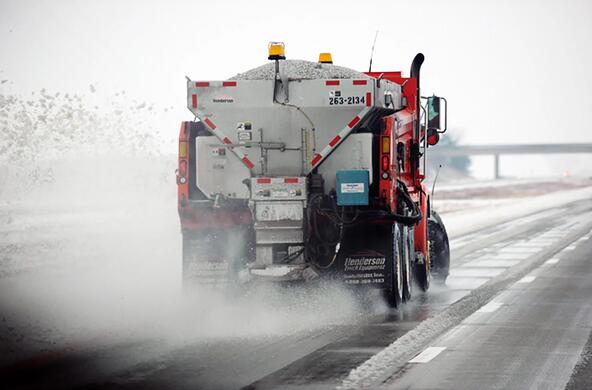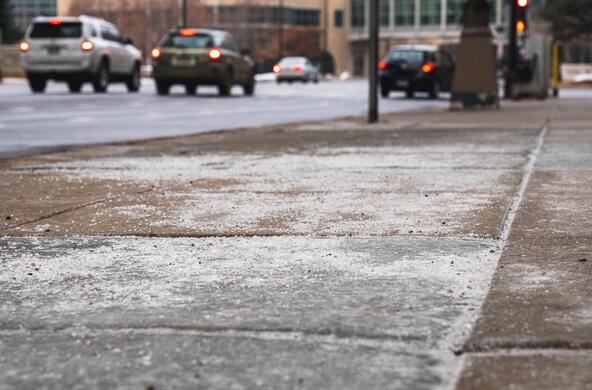This extremely icy and snowy winter has brought renewed attention to the question: What's the best (and most environmentally kind) way to melt it all? Salt, chemicals ... or pickle brine?
Here's a look at melting agents and their environmental impact.
Salt
Approximately 15 million tons of deicing salt are used each year in the United States. A study by Marquette University showed that salt on snowy roads can reduce accidents by up to 88 percent, compared with untreated roads. But sodium chloride is effective only above 15°F to 20°F (-9°C to -7°C) and can harm aquatic life and vegetation when the ice-salt mix seeps into groundwater and streams, where it can remain for decades. Salt also eats into metals, cars, and concrete.
Sugar Beet Juice
You may have seen videos that claim to show beet juice melting ice. That's not really what happens, says Stuart Findlay, a senior scientist at the Cary Institute of Ecosystem Studies, a nonprofit environmental organization in Millbrook, New York. A commercially prepared beet juice solution, when mixed with salt, serves as a "goo" to which salt sticks, minimizing its tendency to run off into nearby streams. Molasses and other sugary substances, including the waste from beer making, provide the same benefit.
The sugar in the solution lowers the freezing point of the ice, which means when sugar is added, salt will melt ice at a cooler temperature than its typical 15°F limit. Officials promise the beet juice product, which is more brown than red, won't stain. The downside: When beet juice makes its way into streams, its sugar can attract unwanted germs, which feed off the oxygen that a lot of aquatic animals need to survive.
Chemicals
In most hardware stores, you will find products labeled as "ice melters." Take a look at the ingredients before making a selection.
Calcium chloride will melt snow at lower temperatures—and at a faster pace—than salt can. And it's not as harmful to plants or animals. But it eats into metal and concrete, damages some trees, and leaves behind a residue of moisture from all that fast-melting snow, which can make roads slippery. And chloride itself, once combined with water, becomes part of the water and cannot be extracted, scientists say. So it has the potential to do harm in perpetuity.
Potassium acetate does not contain chloride and is applied as a preventive measure, to keep ice from bonding to pavement. This solution blocks ice from forming at temperatures as low as -75°F (-59°C). It is noncorrosive, biodegradable, and requires fewer applications because it keeps working longer. But because potassium acetate is biodegradable, it lowers oxygen levels in water and can harm aquatic life.
Pickle Brine
Some states, like New Jersey, are experimenting with pickle brine. Yes, pickle brine, which works like regular saltwater. Similar to traditional rock salt, brine can melt ice at temperatures as low as -6°F (-21°C). And it beats salt in another respect: Prewetting with this substance prevents snow and ice from bonding with pavement, making the ice easier to chip off and remove.
The use of brine also reduces the amount of chloride released into the environment by 14 to 29 percent.
Cheese Brine
Cheese brine, if you are wondering, is the salty water in which soft cheeses (like mozzarella) float. It's abundant in Wisconsin—where it's used to melt ice. Highway officials and farmers have found that while regular salt brine freezes at -6.0°F, cheese brine doesn't freeze up until -21°F (-29°C). The downside is the threat of unwanted "stinky cheese" odor, but so far residents have not complained.
Do It Yourself
You can easily try the brine or juice methods. Combine salt with molasses or beet juice from your grocery store, or that green liquid in pickle jars. Mix it all up, pour it into a spray bottle, and spray away. If all goes well, you will achieve maximum meltage with minimal salt.








